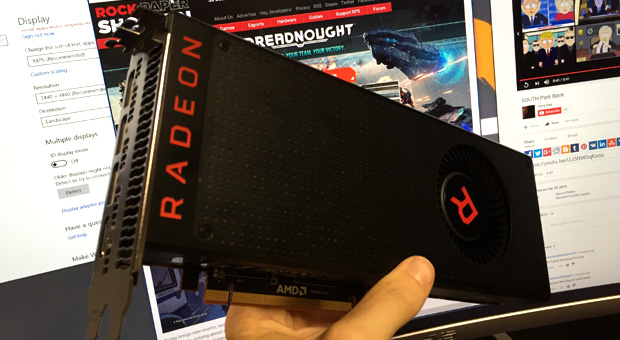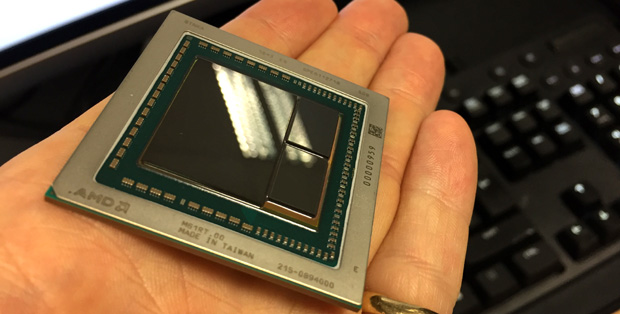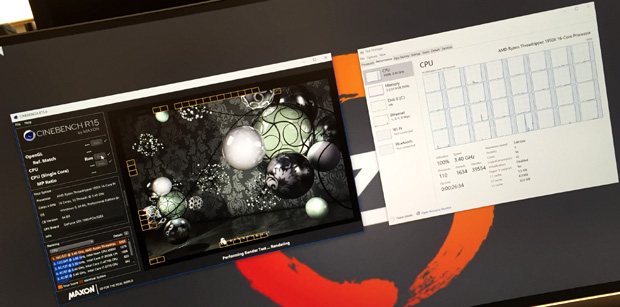
It’s all kicking off at AMD, peeps. The new Vega graphics chip is now greater than merely a press release and has lastly been launched into the wild. Meanwhile, the insane ThreadRipper CPU with 16 cores and 32 threads has additionally landed. It’s all a far cry from just some months in the past when AMD was soldiering on with an aged graphics product and a deadbeat CPU line up. Time to meet up with AMD’s newest awesomeness.
To rapidly recap, AMD has wheeled out its newest graphics tech in high-end type. That means a trio of fairly dear playing cards aimed on the fanatic finish of the market. We’re speaking $400 / £400 minimal, or thereabouts.
You can bone up on the speeds and feeds here. But the fundamentals contain three playing cards primarily based on the identical underlying graphics chip, albeit with various specs, specifically the brand new Radeon RX Vega 56, the Radeon RX Vega 64 and the Radeon RX Vega 64 Liquid.
AMD is styling this new graphics tech because the fifth technology of its long-established GCN structure, however this time it’s purportedly all change. AMD says the principle compute items that comprise the brains of the graphics processing have been redesigned from the bottom up. AMD has additionally apparently pinched some options from its new Ryzen CPUs together with excessive velocity SRAMs and the intelligent Infinity Fabric interconnect.
That’s all nice, however no matter AMD has finished it isn’t instantly translating into a giant uptick in precise recreation efficiency from an architectural standpoint. Not throughout the board, a minimum of. Often it performs just about as you’d count on of any previous GCN graphics chip from AMD given the headline shader rely and clockspeed specs of the brand new boards. But maintain that thought.
My understanding is that a lot of the elevated transistor rely within the new Vega GPU versus the previous Fiji chip discovered within the Radeon R9 Fury boards has been spent on enabling increased clockspeeds via deeper pipelines and different associated options. In different phrases, not on including computational .
However, if Vega does have an on-paper power it’s the potential for efficiency in essentially the most superior recreation engines. The particular particular sauce right here is the so-called Rapid Packed Math characteristic which primarily permits a high-speed floating level computation mode that comes at the price of accuracy.
As it occurs, the final phrase in precision isn’t obligatory for graphics rendering a lot of the time. The upshot of which is that this excessive velocity mode must be a boon for dealing with superior lighting calculations, HDR rendering and all that jazz. As but, it’s a considerably theoretical characteristic as no video games presently help the Rapid Packed Math stuff, however titles are reportedly incoming.
 Could it’s true that right here in my mortal hand I do maintain a nugget of purest graphics?
Could it’s true that right here in my mortal hand I do maintain a nugget of purest graphics?
In the meantime, the yardsticks that matter are video games you possibly can really play proper now and whenever you boil down all of the benchmarks, the overarching narrative to Vega’s efficiency goes one thing like this. If we’re speaking in regards to the air-cooled Vega 64 board, it usually falls someplace in between an Nvidia GeForce GTX 1070 and a 1080. In older video games, it’s nearer to the 1070. In newer video games, make that the 1080. There are after all exceptions, with Doom being an apparent instance the place the Vega 64 beats the 1080 pretty comfortably.
But as a broad image, the “1070-ish in older games, 1080-ish in newer games” thang is an affordable rule of thumb for the place Vega 64 (air) presently sits. What that doesn’t seize, nonetheless, is energy draw. Normally, it’s not one thing I care a fantastic deal about. But this new GPU is awfully energy hungry, sucking up as a lot as 150W or extra above a GTX 1080 underneath full load.
If that issues it’s as a result of it signifies AMD is probably going working the chip proper on the ragged edge when it comes to clockspeeds and voltages, which isn’t terribly fascinating. That mentioned, it could postpone the cryptocurrency mining crew for whom the price of feeding the board with all these watts will likely be off placing. And that ought to a minimum of assist preserve costs in test.
Speaking of the sordid matter of cash, pricing of the primary excessive efficiency Vega boards is excessive sufficient to make them irrelevant to most of us even when they stick near the suggest retail stickers of $499 and $399 for the Vega 64 and 56 respectively (UK costs in £ received’t be a lot if in any respect decrease, I think). So, in lots of regards, what actually issues is the indication these first boards give about what we will count on from extra mainstream Vega-based graphics boards within the coming months.
That doesn’t look vastly promising from the place I’m slouching. The chip utilized in these first Vega playing cards is totally large and it struggles to compete with a reasonably previous and far smaller second-rung Nvidia GPU within the type of the GP104 merchandise discovered within the GTX 1070 and 1080 boards.
It’s onerous to see how a a lot smaller GPU primarily based on this Vega structure goes to radically shake up the area instantly beneath the 1070. The potential exception to that’s if AMD manages to drag off one thing actually particular vis-à-vis clockspeeds. But that’s fairly speculative.
All in all, then, I’m not saying Vega is a catastrophe. But it does really feel like a GPU design that’s ready for video games to catch up and I’m not satisfied that’s a really good factor. Nvidia is sensible at making GPUs that work nice within the right here and now and the issue for AMD is that a GPU isn’t for ever. It’s barely for subsequent 12 months.
So efficiency immediately is finally extra essential than potential for tomorrow. Whatever, one factor I’m certain about is that Vega isn’t pretty much as good as AMD would have preferred. Not by a good previous whack.
Happily, that isn’t one thing you possibly can say about its new Ryzen CPUs. For essentially the most half, Ryzen should a minimum of match and doubtless exceed AMD’s hopes for a brand new CPU structure.
 Fly my pretties! 32 threads. Count ’em!
Fly my pretties! 32 threads. Count ’em!
It’s a pity for us that the one space the place Ryzen isn’t a whole smash hit is video games. But it’s ok more often than not in present video games and I reckon it would get considerably higher over time as builders familiarize yourself with its strengths and weaknesses. It’s a CPU that’ll be round for a very long time in some or different type, so I’m assured doing that work will likely be seen as worthwhile.
As for the brand new 16-core ThreadRipper chip, nicely, it’s actually a technological curiosity fairly than a practical proposition for avid gamers. But I couldn’t assist taking it for a fast spin anyway. For essentially the most half, it’s just about Ryzen redux in most video games. But a short zap in Total War reveals a stage of persistent stutteriness that’s even worse than the extra mainstream Ryzen chips.
It’s a really costly chip, in order that arguably makes its gaming efficiency considerably educational. But the stuttering was definitely dangerous sufficient that it could put me off bagging a ThreadRipper for now, if I had the inclination to spend that sort of cash on a CPU. Which I don’t.
Overall, it’s attention-grabbing occasions, way more so than a mere 12 months in the past. I do fairly want Vega was a stronger competitor. But it’s in all probability simply ok to maintain Nvidia on its toes fairly than sand-bagging, Intel type. Moreover, if Ryzen sells in addition to it deserves to, AMD ought to have some cash to plough again into the graphics enterprise and provides Vega the polish it in all probability wants.


